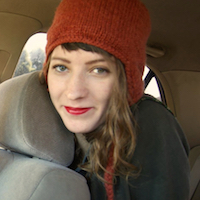More about Max Ernst
- All
- Info
- Shop

Contributor
Max Ernst’s infamous penchant for defying authority is said to have been sparked by his good old dad, a devout Catholic and strict disciplinarian.
Fortunately, his father also instilled in him a love of painting. This brilliant combination led Ernst to become one of the pioneers of the Surrealist movement in the 20th century.
Ernst was the first artist to apply Freud’s dream theories to explore the roots of his creativity (far out, man) and had an intense desire to paint from the deepest depths of his “nonverbal subconscious.” He spent considerable amounts of time visiting asylums and observing art created by mentally ill people, which he saw as the only real example of unrestrained creative energy.
Ernst was obsessed with birds and used the image of a bird (named Loplop) as his alter ego in many of his paintings. According to Ernst, this preoccupation with the avian dated back to his childhood, when his pet bird died the same night that his baby sister was born. Apparently this caused quite a mix-up for young Max and he briefly became convinced that birds were humans.
In terms of relationships, the bird/human thing didn’t stop Ernst from embarking on a string of largely unsuccessful marriages. He is most known for his incredibly steamy ménage à trois with Paul Éluard and his wife Gala. Gala later left the threesome in favor of Salvador Dalí and the new duo were soon after granted an exclusive audience with Pope Pius XII. We’re guessing Ernst and Éluard were just about as shocked at that turn of events as we are.
However, Ernst quickly recovered and married heiress and art collector Peggy Guggenheim, who helped him escape to America during World War II when he was declared an “undesirable” by the Nazis. He subsequently divorced her (ouch) and married artist Dorothea Tanning, who he remained married to until his death.
Featured Content
Here is what Wikipedia says about Max Ernst
Max Ernst (/ɜːrnst/;
German: [ɛʁnst] 2 April 1891 – 1 April 1976) was a German-born painter, sculptor, printmaker, graphic artist, and poet. A prolific artist, Ernst was a primary pioneer of the Dada movement and surrealism in Europe. He had no formal artistic training, but his experimental attitude toward the making of art resulted in his invention of frottage—a technique that uses pencil rubbings of textured objects and relief surfaces to create images—and grattage, an analogous technique in which paint is scraped across canvas to reveal the imprints of the objects placed beneath. Ernst is noted for his unconventional drawing methods as well as for creating novels and pamphlets using the method of collages. He served as a soldier for four years during World War I, and this experience left him shocked, traumatised and critical of the modern world. During World War II he was designated an "undesirable foreigner" while living in France.
Ernst was born in Brühl. He began painting in 1909 while studying at the University of Bonn, and later joined the Die Rheinischen Expressionisten group of artists. Ernst's work often featured ironic juxtapositions of grotesque elements with cubist and expressionist motifs. He had a fascination with birds, often including his alter ego, Loplop, a bird, in his work. He eventually settled in France and achieved financial success in the 1950s. He died in Paris on 1 April 1976.
Check out the full Wikipedia article about Max Ernst





















